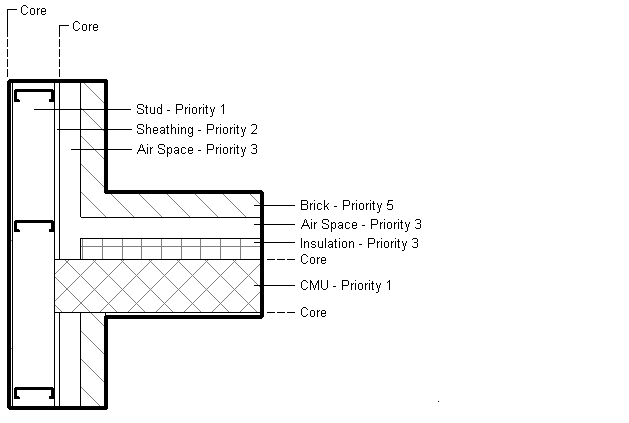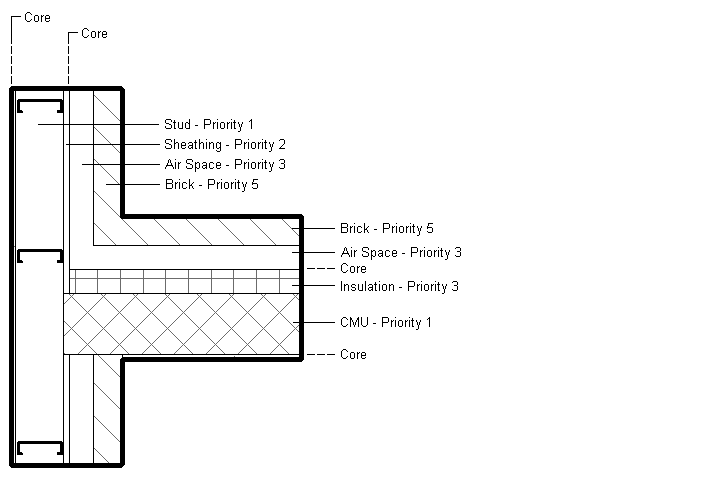You assign each layer a specific function so the layer can join to its corresponding functional layer. Layer functions have an order of precedence.
Rules for Layer Joins
- The structure layer has the highest priority, Priority 1.
- Finish 2 has the lowest priority, Priority 5.
-
Revit LT connects high priority layers before connecting layers with the lowest priority.
For example, suppose that you join 2 compound walls. A layer in the first wall with Priority 1 joins to a layer with Priority 1 in the second wall. That Priority 1 layer can pass through lower priority layers before joining to the other Priority 1 layer. A layer with a lower priority cannot pass through a layer of equal or higher priority.
The following illustration shows higher priority layers joining before lower priority layers. The Priority 1 CMU layer of the horizontal wall passes through all layers, until it reaches the Priority 1 stud layer of the vertical wall. Note that the insulation in the horizontal wall does not pass through the air space in the vertical wall, because they are both Priority 3 and are outside the core layer.

- When layers join, the join cleans up if the 2 layers have the same material. If the 2 layers have different materials, a line appears at the join.
- Each layer must have a function assigned to it for Revit LT to match layers accurately.
- Layers inside the core of one wall pass through layers of higher priority that are outside the core of the joined wall. The layers in the core extend to the core of a joined wall, even if the core layers are set to Priority 5.
The following illustration shows how a layer of lower priority inside the core passes through layers of higher priority outside the core. The insulation layer of the horizontal wall has moved inside the core. The insulation layer can now pass through any layer outside the core, regardless of its priority.

Layer Functions
Layers can be assigned the following functions:
- Structure [1]: Layer that supports the remainder of the wall, floor, or roof.
- Substrate [2]: Material, such as plywood or gypsum board, which acts as a foundation for another material.
- Thermal/Air Layer [3]: Provides insulation and prevents air penetration.
- Membrane Layer: A membrane that commonly prevents water vapor penetration. The membrane layer should have zero thickness.
- Finish 1 [4]: Finish 1 is typically the exterior layer.
- Finish 2 [5]: Finish 2 is typically for the interior layer.
